Saturday 17 September 2016
Visiting Auschwitz
When David gave me flights to Krakòw for my 30th birthday, his one condition was that we visited Auschwitz. I wasn’t keen and didn’t really know how I felt about visiting a place where so many people had suffered. I also didn’t think I would write about the experience, wondering if it was disrespectful. I spoke about it with a few friends and one said that it is important that Auschwitz is never forgotten. Another friend said that once I visited, I’d think that everyone should have to visit.
In hindsight, I completely agree with both of my friends and feel that I now have a much better understanding of Auschwitz and the horrors that took place there. Of course, it is not an enjoyable day out, but by visiting I feel that have paid my respect and honoured all those who suffered and were murdered there. And, after discussing it with a friend who was very keen to visit herself and learn more about Auschwitz, I decided that I could include our visit in my blog.
A guided tour
Before arriving in Krakòw, I had a look into doing the trip on our own but, as Auschwitz is quite far from Krakòw, decided it would be much easier to book an organised tour. There are numerous tour companies from Krakòw and I contacted a few which were highly rated on TripAdvisor and went with the one who responded first.
Through Krakòw Discovery, we booked a tour which would pick us up at our apartment, drive us to Auschwitz for a guided tour, drive us to Birkenau (or Auschwitz II) and then on to the Wieliczka Salt Mine. The tour is as part of a group, lasted around 11 hours and cost 250PLN (around £50) per person. For comparison, a guided tour to Auschwitz and Birkenau costs 45PLN and the Salt Mine tour is 84PLN so we paid about £25 each for the transport.
Auschwitz
We got picked up at 8.40am by our driver, Konrad in a people carrier. He then went on to pick up a couple from Thailand and a couple and their son from Belgium. From Krakòw the drive to Auschwitz took about an hour and 10 minutes. As we drove through the Polish countryside the rain started to fall heavily, which seemed fitting for a trip to a concentration camp. When we arrived, we had about 10 minutes to grab a coffee and use the toilets before the tour started. We bought a couple of ponchos as the rain was quite heavy and we’d come unprepared.
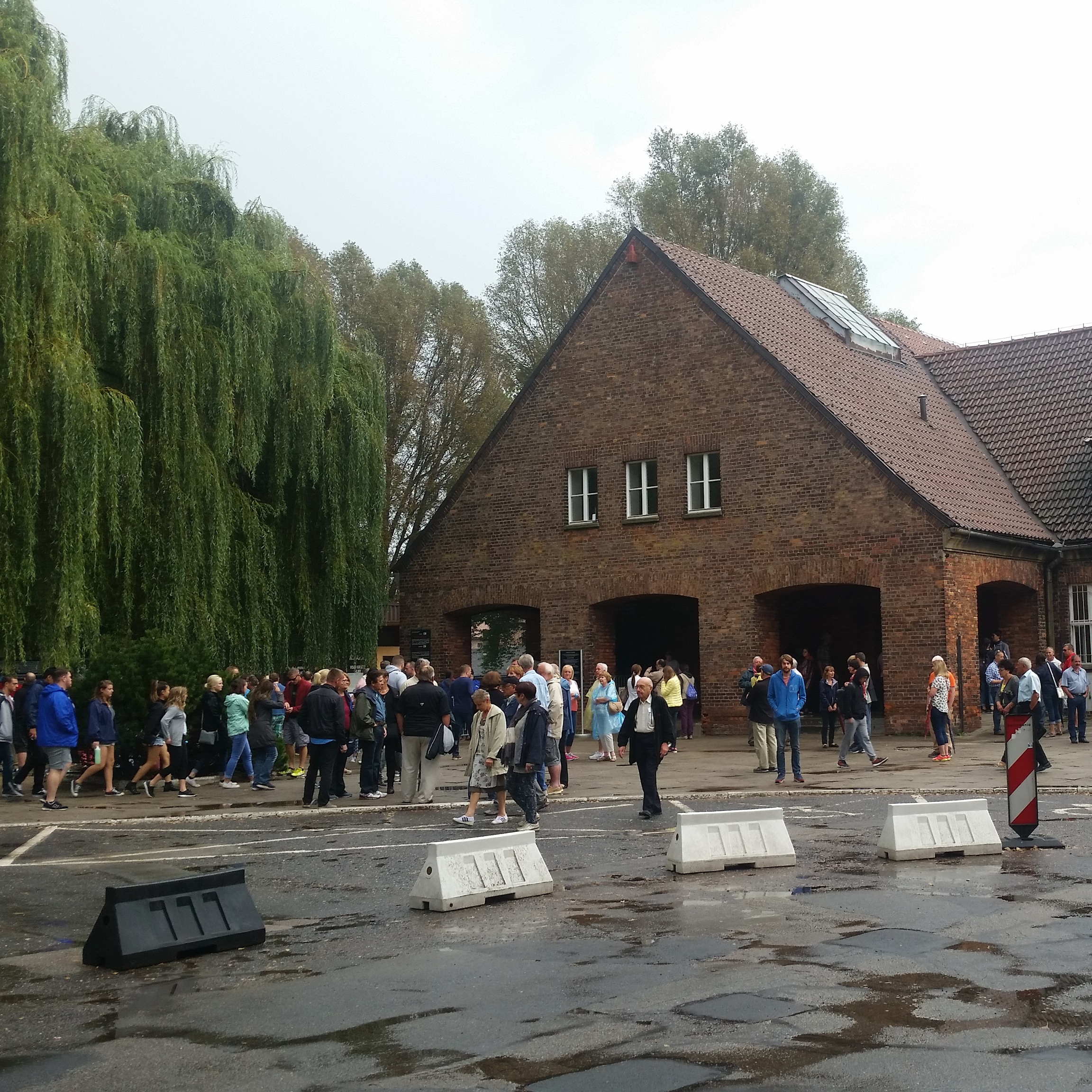
Our driver took us over to the entrance for tour groups and we queued up to go through the metal detectors. Konrad left us there and said that he would meet us after the tour. After the security check, we joined a larger group of 35 people which was led by someone who worked at the Auschwitz Museum. We were all handed headsets so that we could hear our guide.

At this point, we could see the infamous ‘Arbeit Mach frei’ sign which is above the entrance. Our guide spoke of the cynical sign stating that ‘work sets you free’ as we all now know was not the case. This sign is a replica as the original was stolen. It has since been recovered but is now in storage at the Auschwitz-Birkenau State Museum.
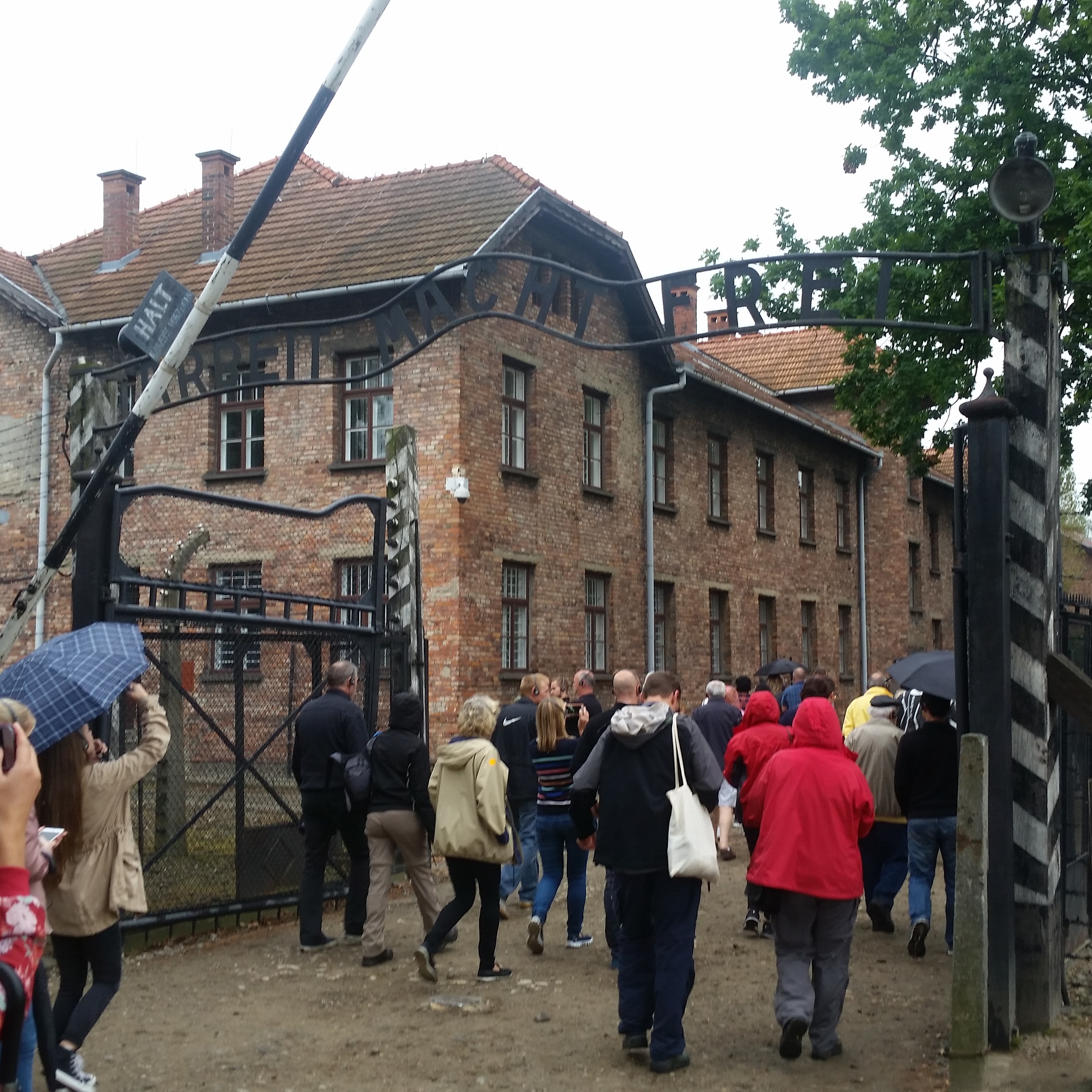
We passed under the sign into the concentration camp and we walked around the numerous buildings of the camp, with our guide pointing out and explaining things. The first building we entered showed living conditions of the prisoners. Beds were firstly straw or mattresses on the floor and then went on to become bunk beds with three levels, where two people slept on each small bed.
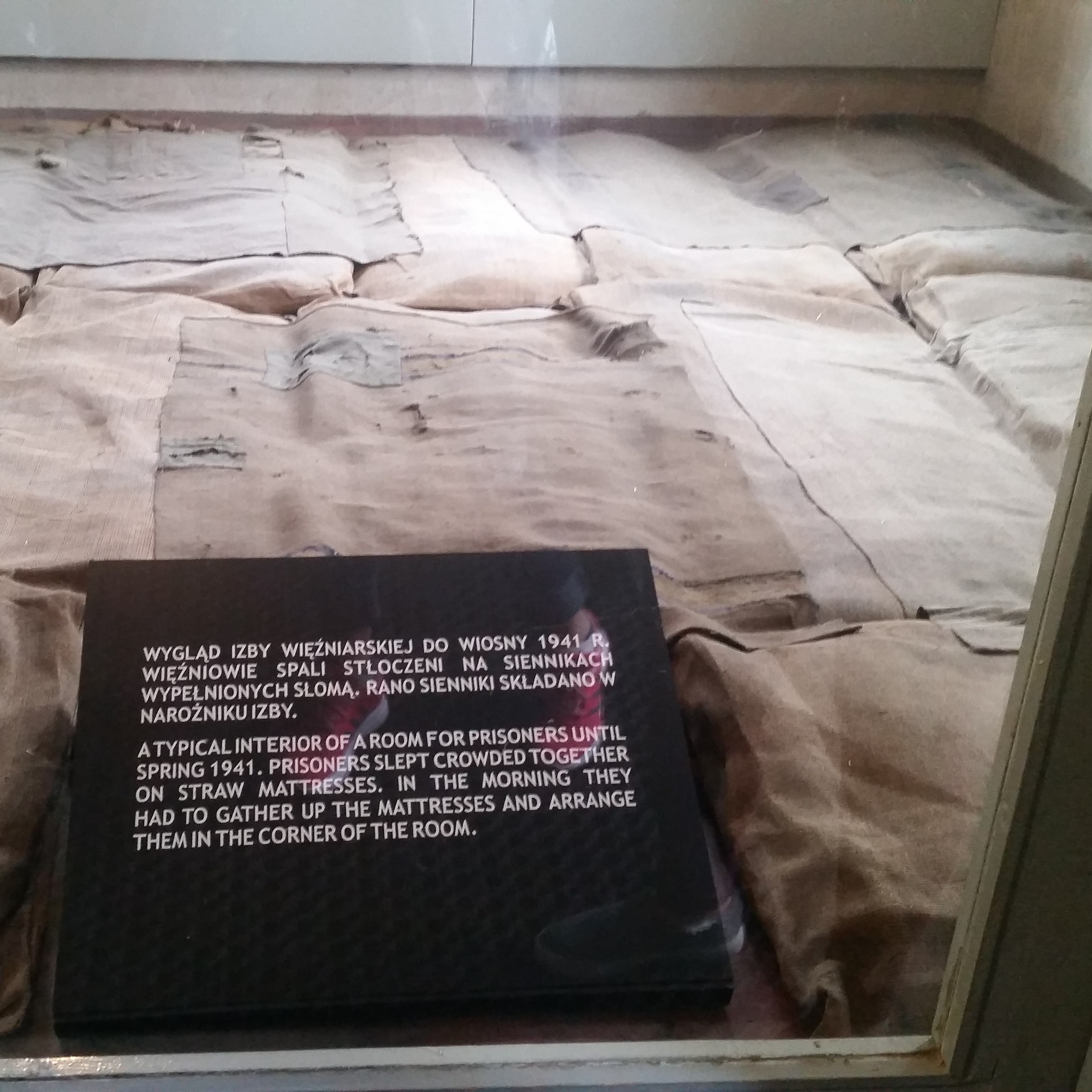
We walked through the central corridor of the building and looked into rooms of toilets and sinks, which were completely inadequate for the number of prisoners.
The most haunting part of the whole trip for me was in the central corridor of the block showing living conditions as it was lined with hundreds of photographs of prisoners of Auschwitz. Each photograph had the person’s name, date of birth, date of ‘deportation’ to Auschwitz and date of death (murder).

Rows and rows of ordinary people who had been sentenced to death because of their race. Women who had had their hair hacked off and men who had had their heads shaved, forced to strip naked and put on striped uniforms by nazis and pose for a photograph. People who probably didn’t know quite how awful a situation they were in yet. Some people were at the camp only a few days before being murdered, some were there for years. I felt like I wanted to take my time and honour the people by looking at each individual photograph.
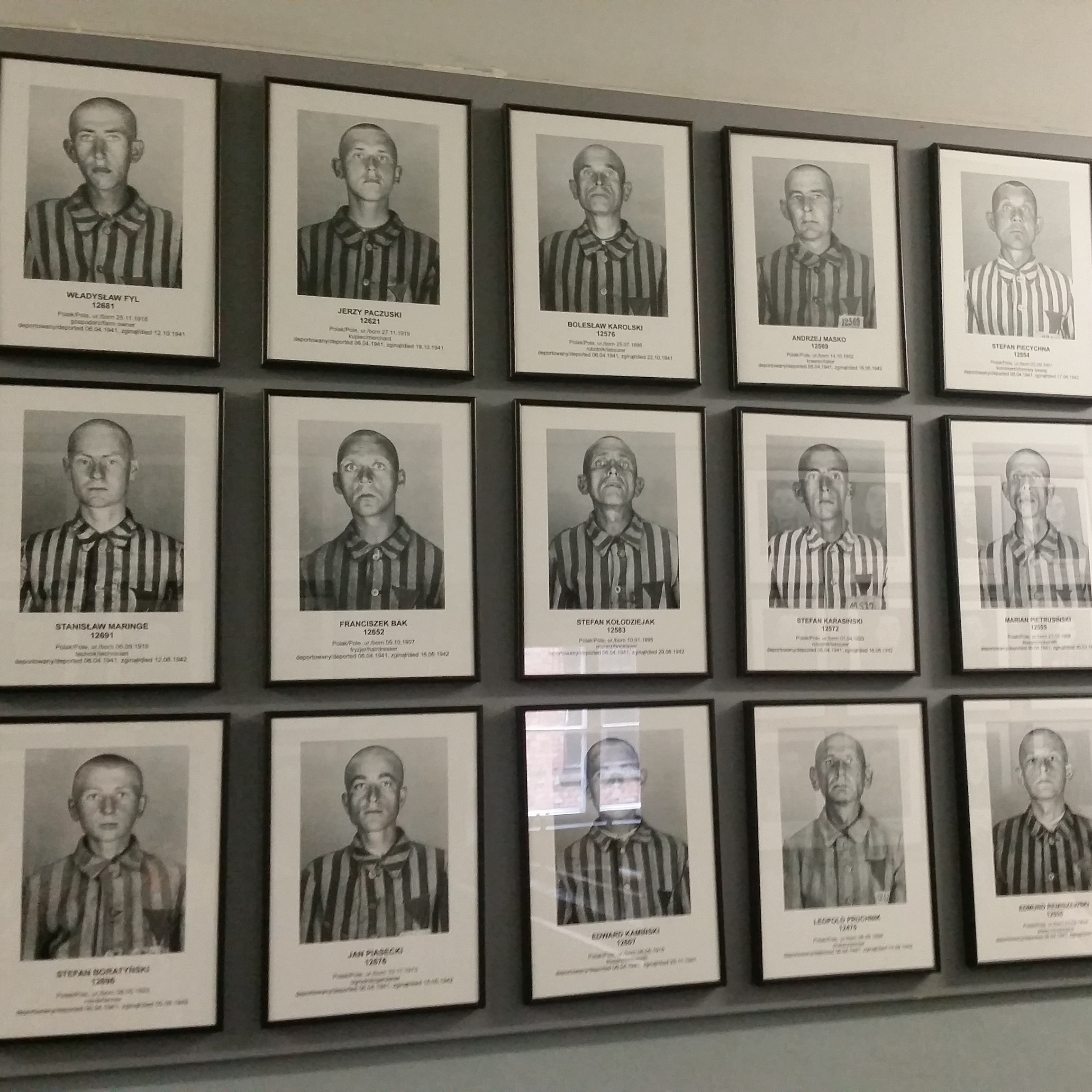
Some people, understandably, looked broken but some held their head high in the photo which I saw as a respectable ‘fuck you’ to the nazis. I saw two girls photos beside each other that were twins and were only 16 when the photos were taken. One was murdered two months before the other and I imagined how hard it would have been for the remaining twin, without even considering the possibility of them being involved in the horrendous experiments on twins that I had previously read about.

There were so many photos and it was overwhelming to think that these people were a tiny drop in the ocean of the 1.1 million people murdered at Auschwitz. Putting a face to a few hundred of these people made it all very real as their faces watched us walk along the corridor.
Between two buildings, at the back of a courtyard stood the executions wall where thousands of people were murdered from 1941 to 1943. Men, woman and even children were forced to remove their clothes in the building, known as ‘death block’, and go to the wall in pairs to be shot in the back of the head by nazis. The wall was dismantled in 1944, when executions were mostly by gas chambers, but has been partially recovered by the Museum. Within this courtyard also stand two posts, where torture known as ‘the post’ was carried out. Prisoners would be hung from a post by their wrists, with their arms twisted behind their backs.

Before visiting Auschwitz I expected there to be a lot of tears, both from myself and from other visitors. Surprisingly I didn’t see anyone crying and the only time I felt myself fighting back tears was when I saw the execution wall. I think visitors are more shocked than upset when walking around the camp.
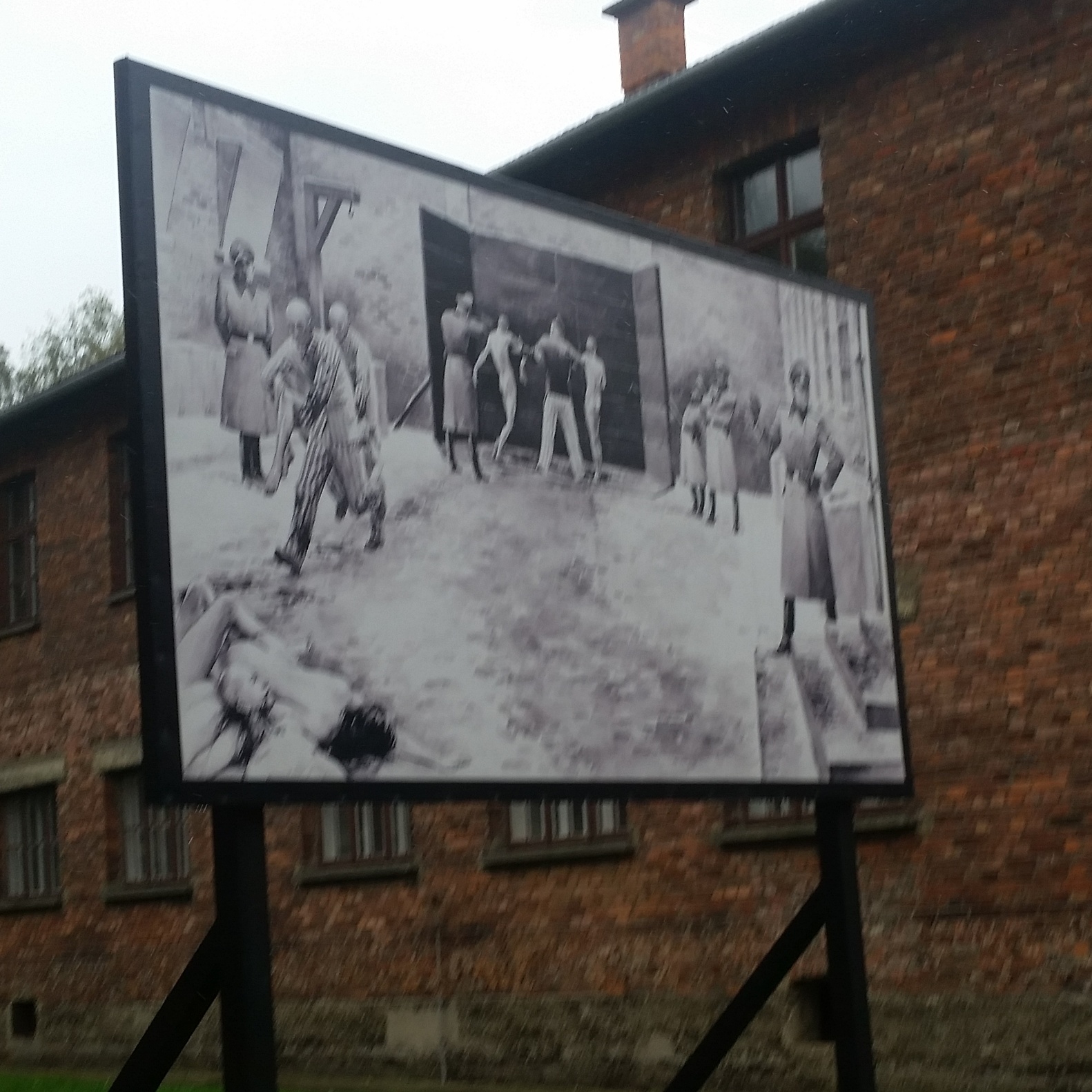
We went inside block 11, or ‘death block’ and down into the basement where the punishment cells were. In 1941, prisoners sentenced to death by starvation were held here, including Maximilian Kolbe, the Polish Franciscan friar who volunteered to die in place of another prisoner. We heard more about Kolbe the day after during our bike tour – the prisoner who he saved was a survivor of the camp and went on to have many children and grandchildren so the life Kolbe saved was not wasted.
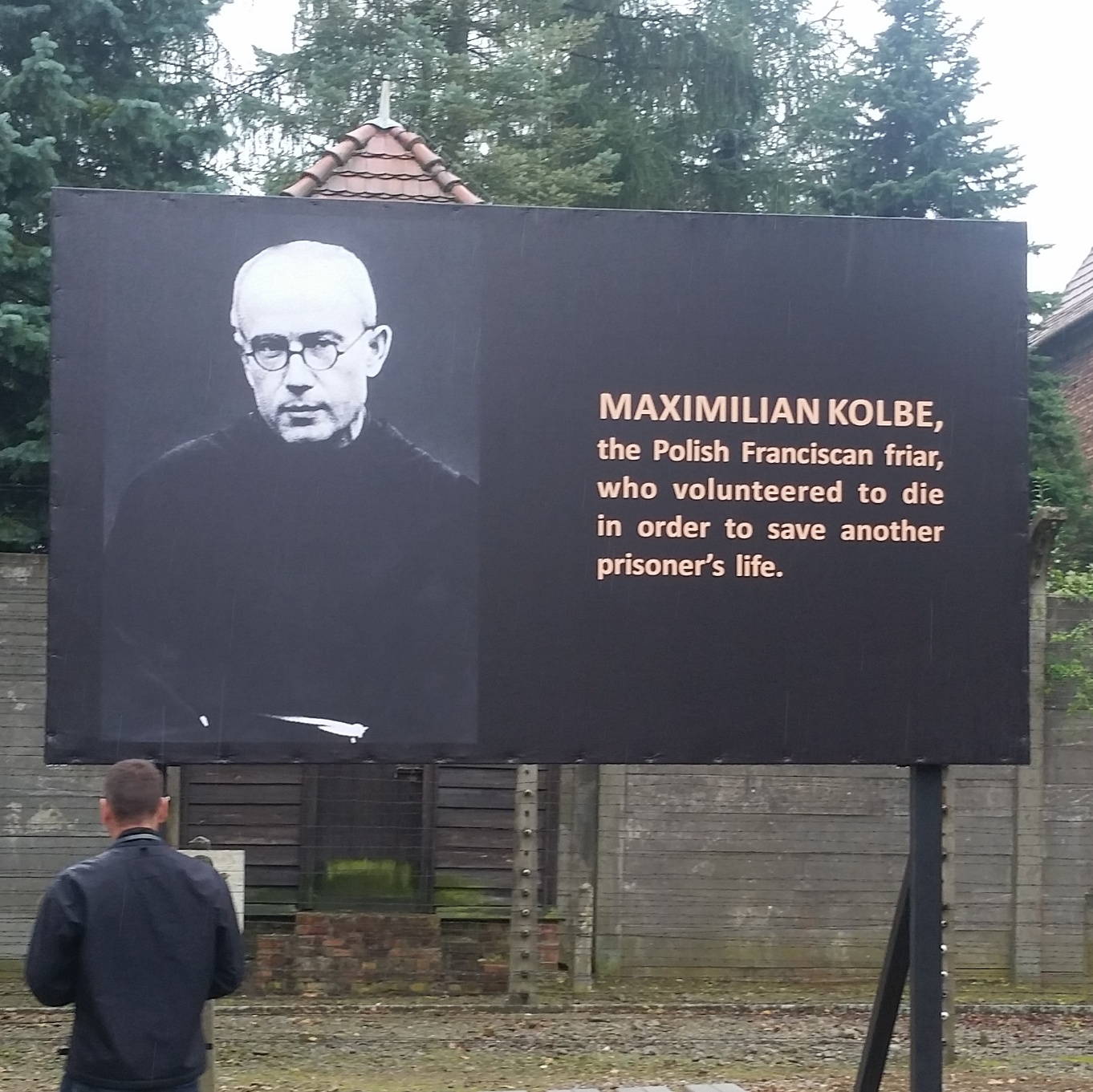
Huge groups of people were also locked in tiny rooms to suffocate as they ran out of air. It was in this basement that the nazis first experimented with mass murder by Zyklon B, which went on to become the infamous gas chambers. I had always assumed that the gas chambers used gas through the air but it was actually Zyklon B, which is pellets of pesticide. In September 1941, 600 Soviet prisoners of war and 250 Polish political prisoners were locked in the basement with all windows blocked. They threw in Zyklon B and waited 24 hours. When the prisoners hadn’t died, the nazis threw in more Zyklon B and successfully carried out mass murder on these prisoners. A prisoner who was a doctor was forced to dissect one of those killed and advised that their lungs had exploded.
Outside block 5a, our guide stopped to tell us about Jews who had come to Auschwitz from Greece. They had been told that they would be moving to Krakòw where they would have a better life, stopping first to recover from the long journey in Auschwitz. The Jews arrived with packed suitcases full of their possessions including kitchen utensils, and of course never got to leave Auschwitz.

Anything of value was removed from their cases and shoes, clothes, kitchen utensils etc were put into huge storage warehouses. I think there were less displays in this block than usual as it is being renovated and displays were replaced with huge photographs. These showed mountains of shoes and clothes. There were suitcases on display as well as a huge skip full of kitchen utensils.
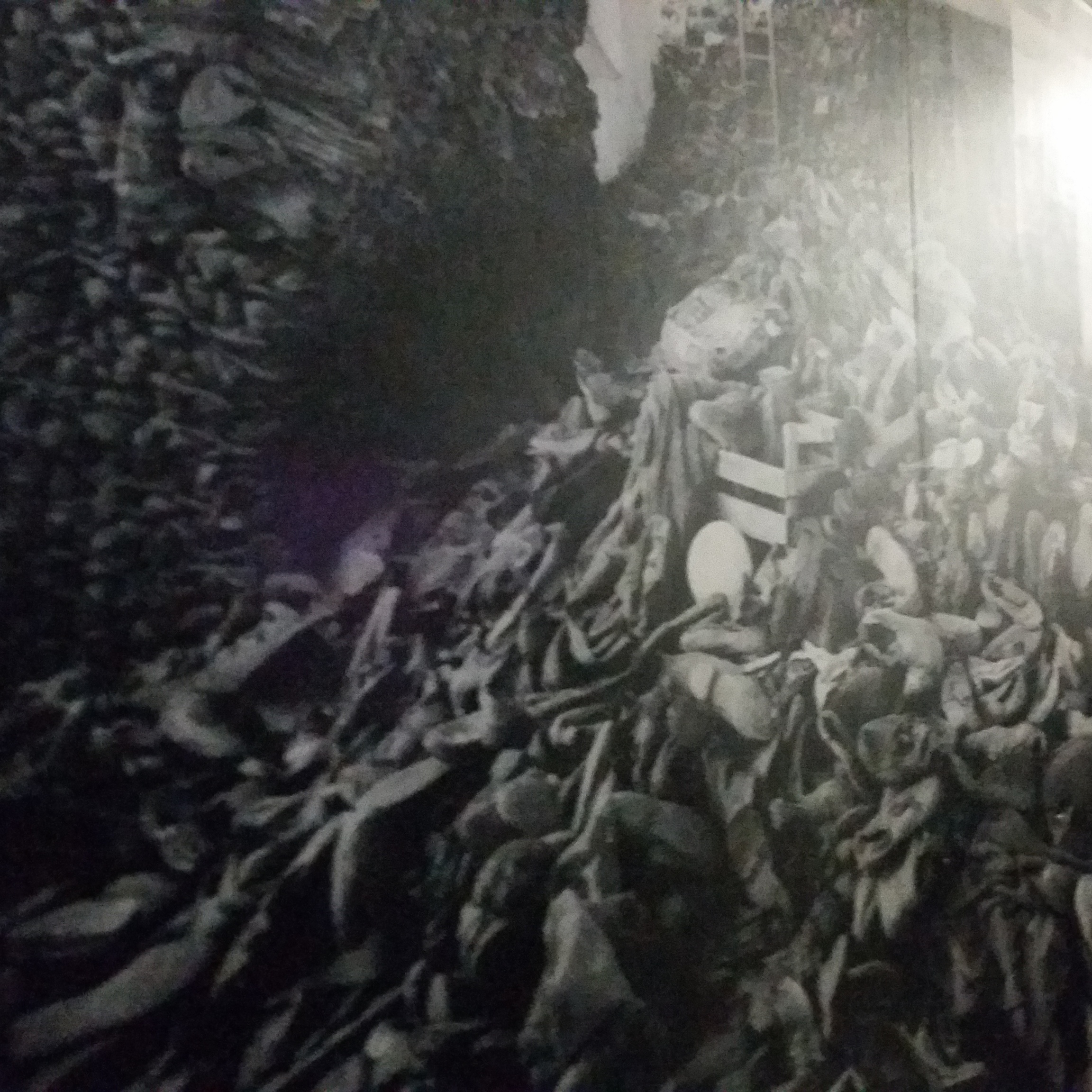
The final block that we went inside was block 4, which now houses the ‘extermination’ display, which told the story of mass murder by the nazis. The first sign provided the overwhelming numbers of those murdered in Auschwitz. In the years 1940-1945, 1.3 million people came to Auschwitz and 1.1 million people died in Auschwitz.

Through pictures, the exhibitions tells the story of all those who arrived in Auschwitz. It went on to cover Auschwitz II Birkenau, the ‘death camp’ which opened in 1942. Our guide described how people would arrive right into the camp by train and stand on the platform where a ‘selection’ would take place. People considered to be fit for work were directed to the camp and all others were lead to gas chambers to be murdered. Those considered fit for work were males aged 13 to 45. Only about 25% of the arrivals.
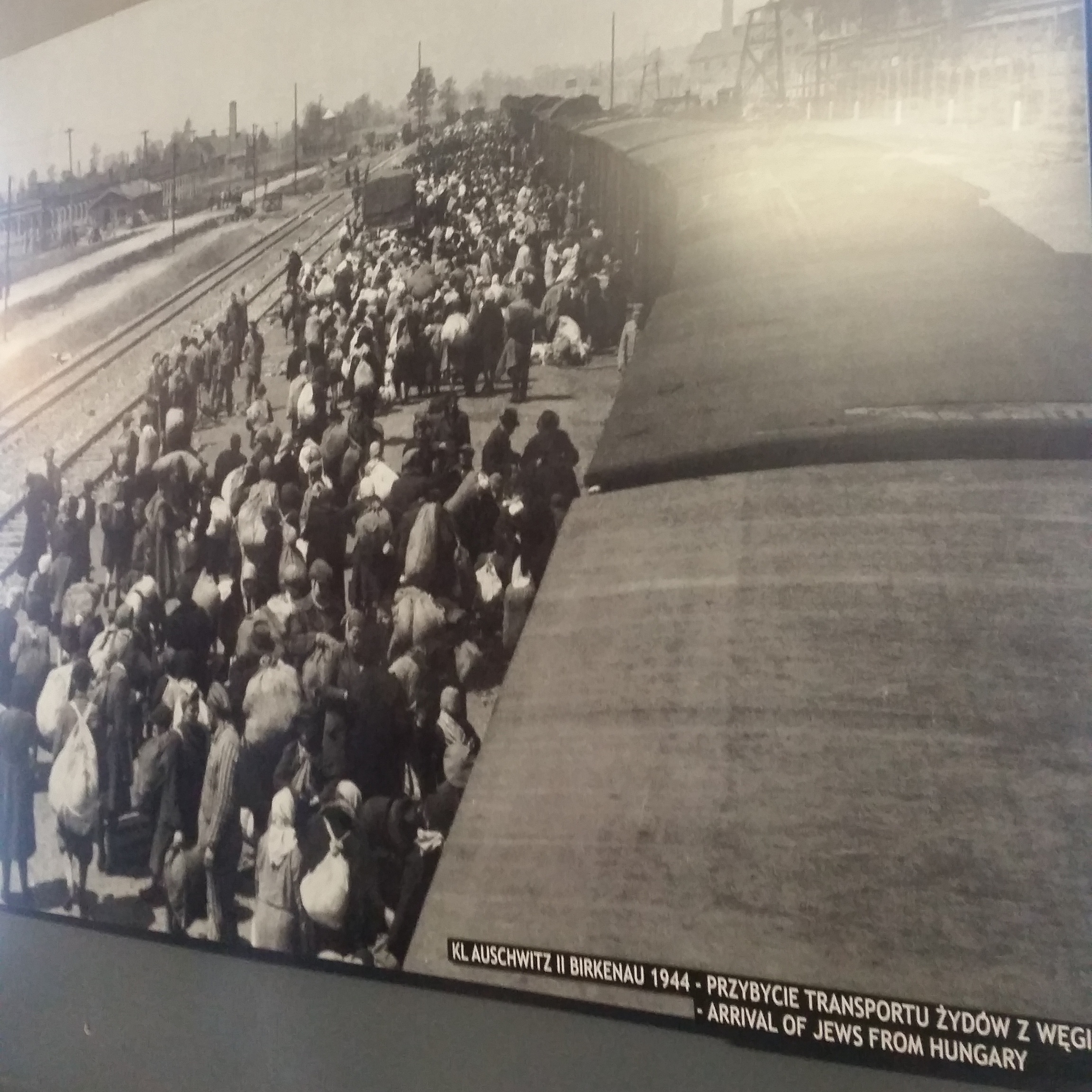
The other 75% were told they were going to take a shower and led to gas chambers which had fake shower heads on the ceilings. People were forced (by beatings and threatened by dogs) to cram into the chamber where Zyklon B was poured in. After they died, their bodies were stripped of gold teeth and jewellery, their hair was cut off and their bodies were burnt in the crematorium.
Upstairs in block 4 showed a small model of the gas chambers and crematoriums and canisters of Zyklon B. There was also a huge display of human hair. The nazis sold this as it could be used to make material.
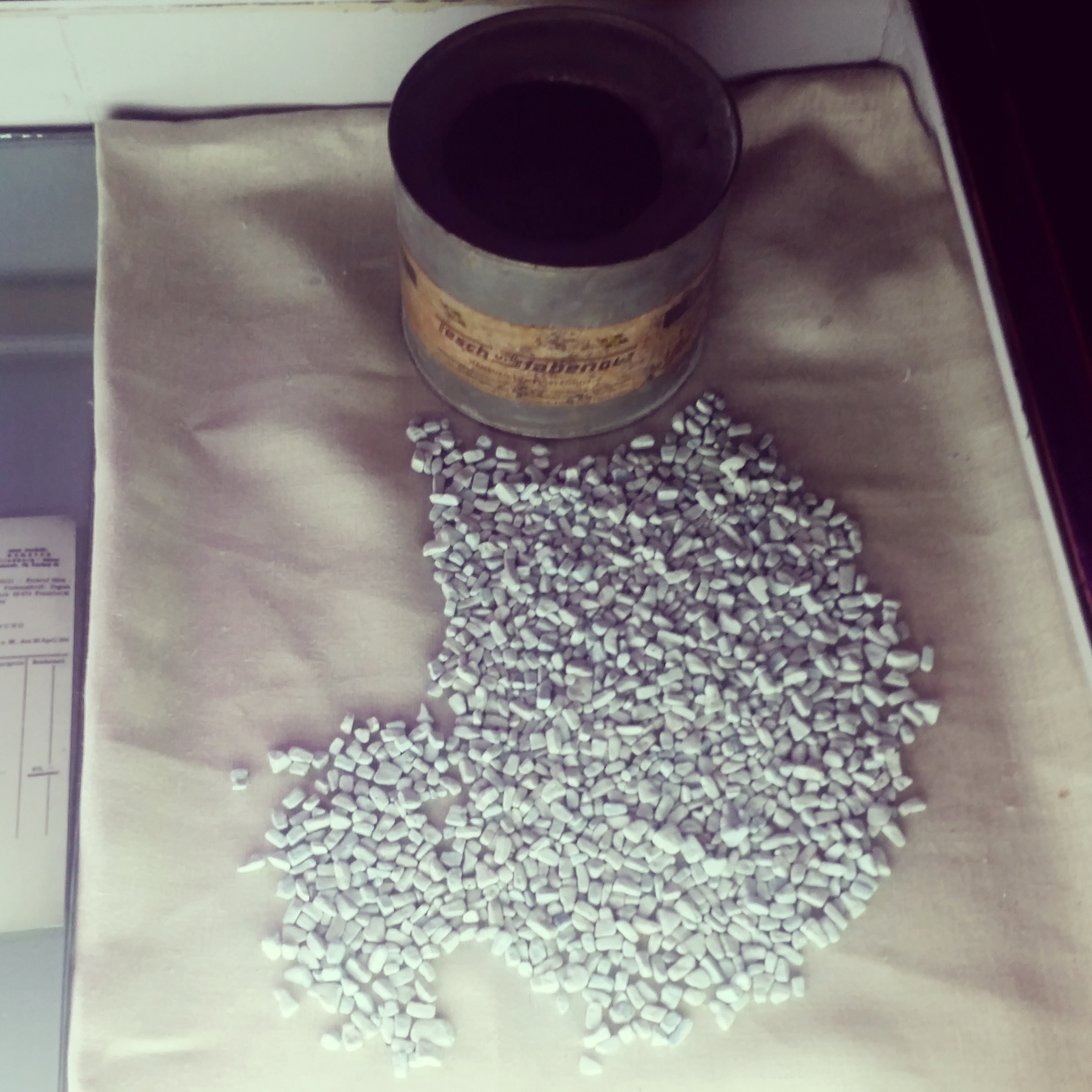
We then went through two layers of barbed wire fencing to the camp Gestapo. Prisoners who were suspected of being involved in the camp’s underground resistant movement or of planning to escape were interrogated and tortured in this area, many dying as a result.
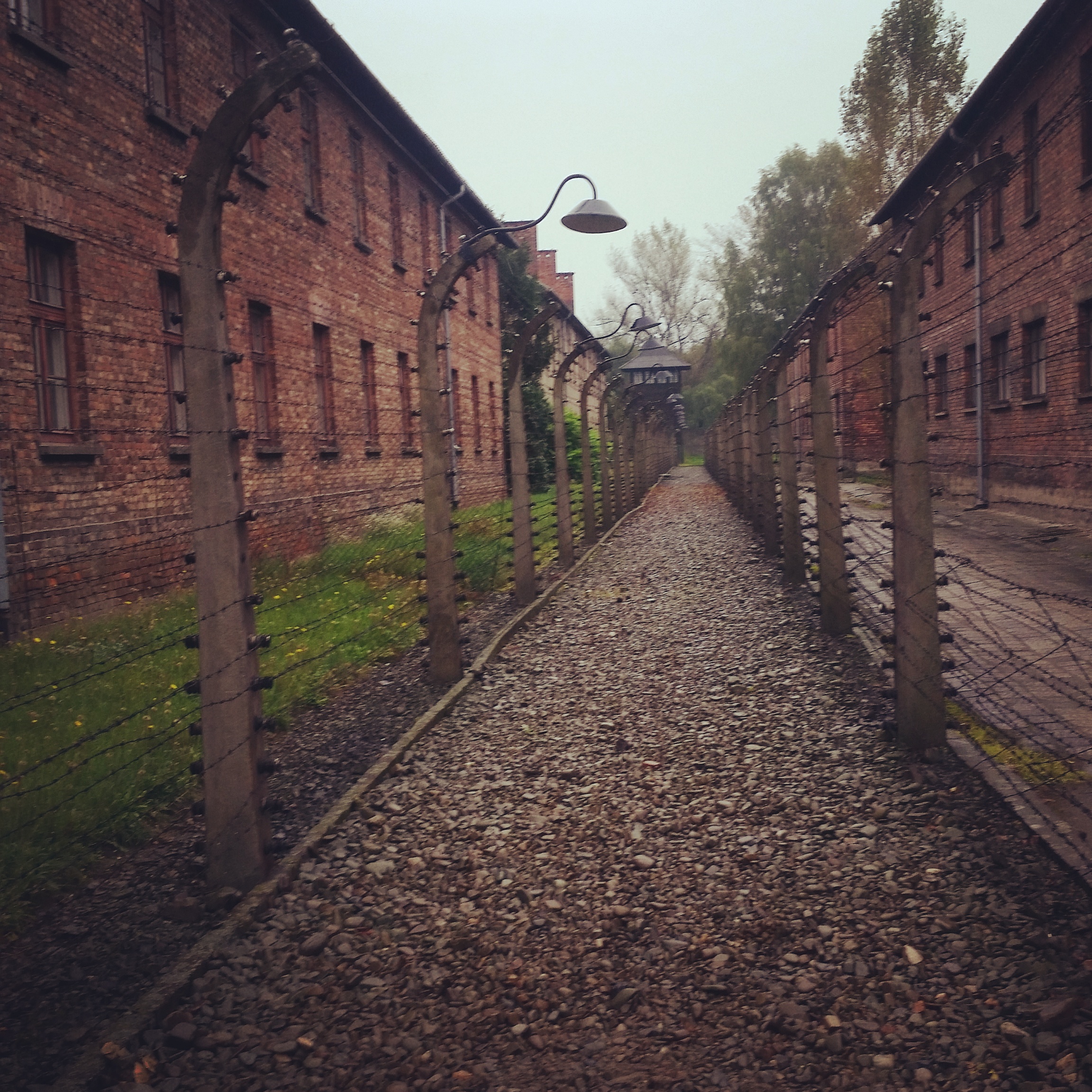
The back garden of the family home of Rudolph Höss, the first commander of Auschwitz, backed on to this. After the war, Höss was tried and sentenced to death by the Polish Supreme National Tribunal. He was hanged in this place on 16 April 1947. Being hanged seems far too painless for the man who oversaw the horrors of Auschwitz.
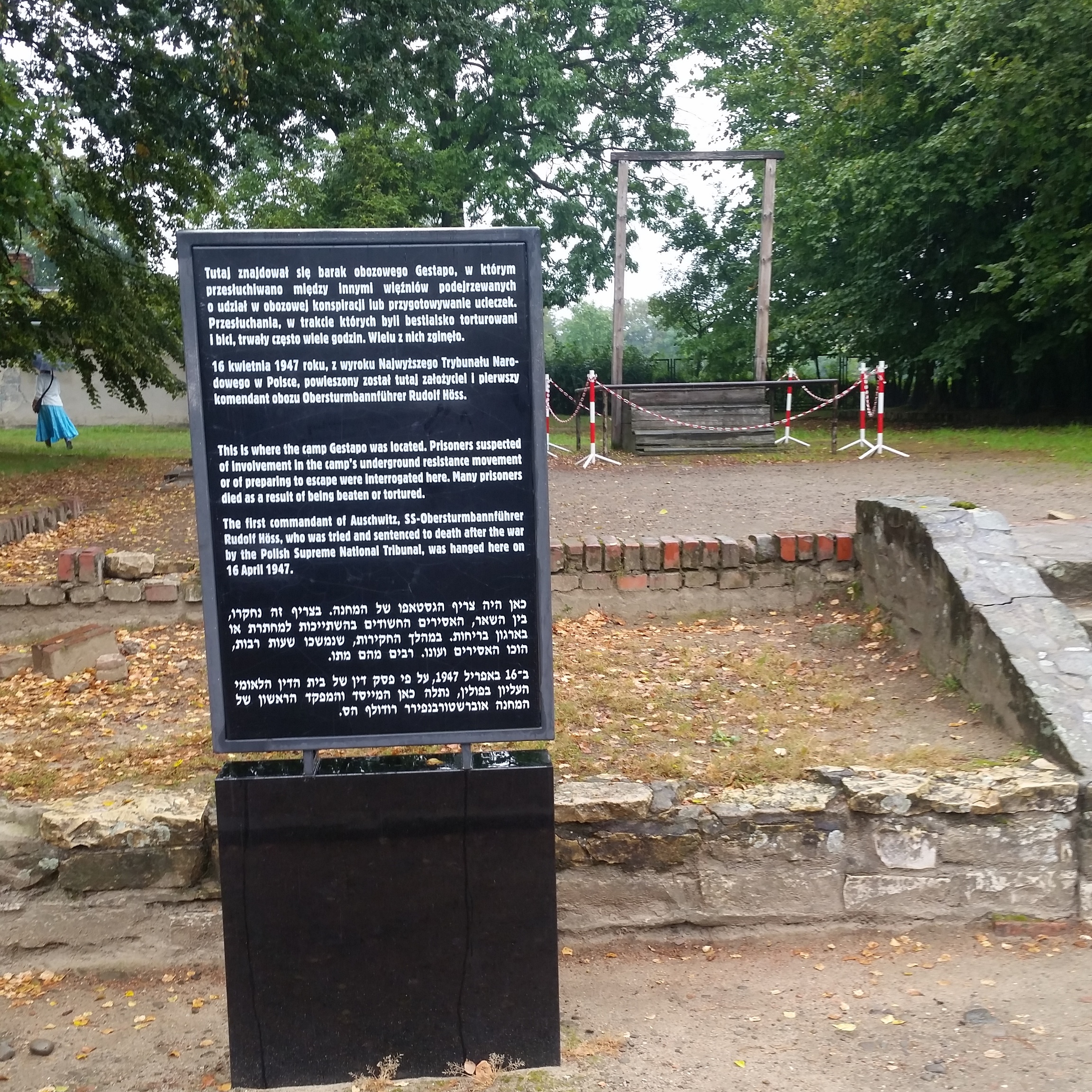
The final place we visited in Auschwitz was the gas chamber and crematorium. These are in a building which was a bunker before the war. The camp authorities used the largest room as a morgue until 1941 when, after their successful test of using Zyklon B for killing 850 prisoners in the ‘death block’, it was adapted for use as a gas chamber.
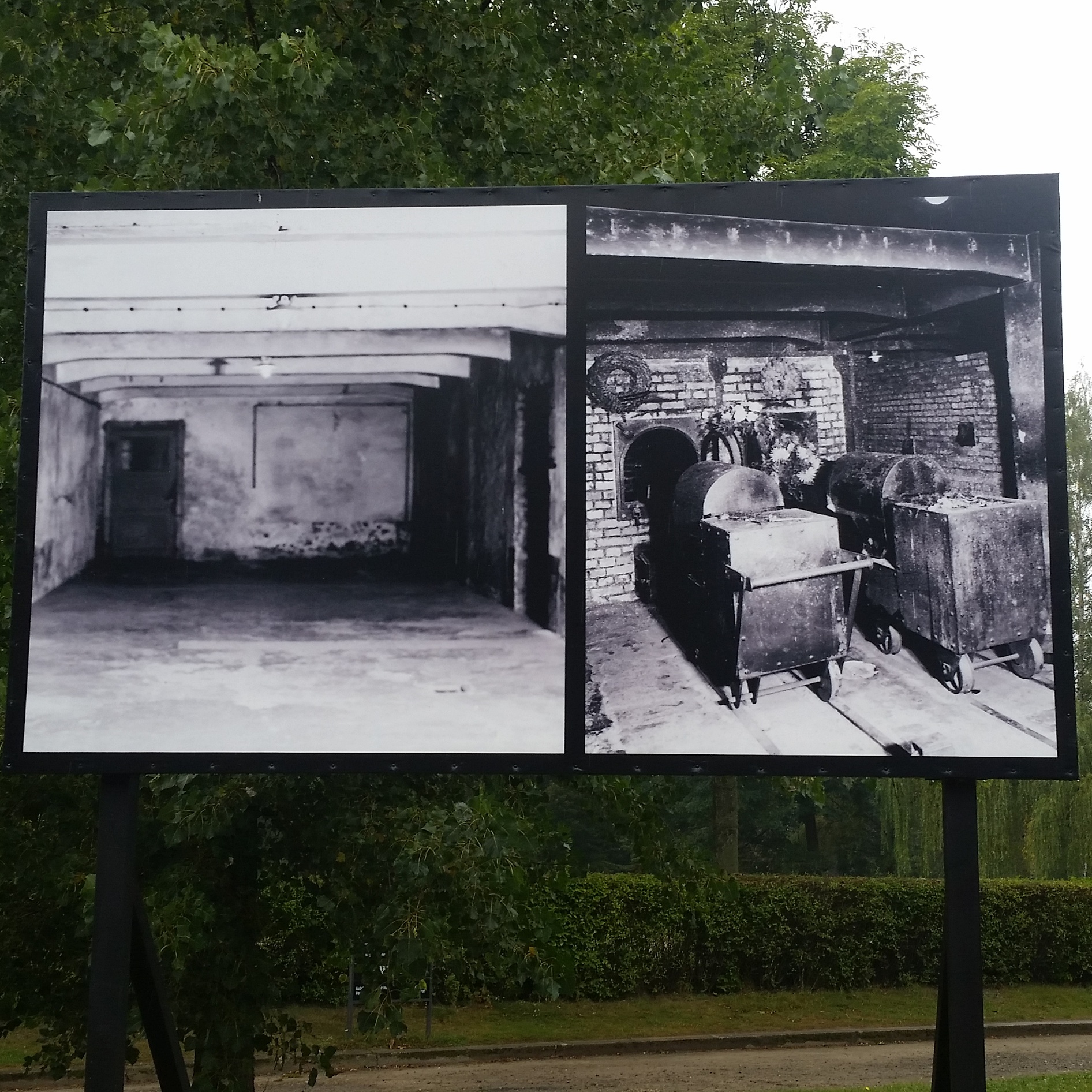
Scratch marks could be seen on the walls of the huge room used as a gas chamber. Next door to this room is the crematorium which was used to burn the bodies of those murdered in the gas chamber.
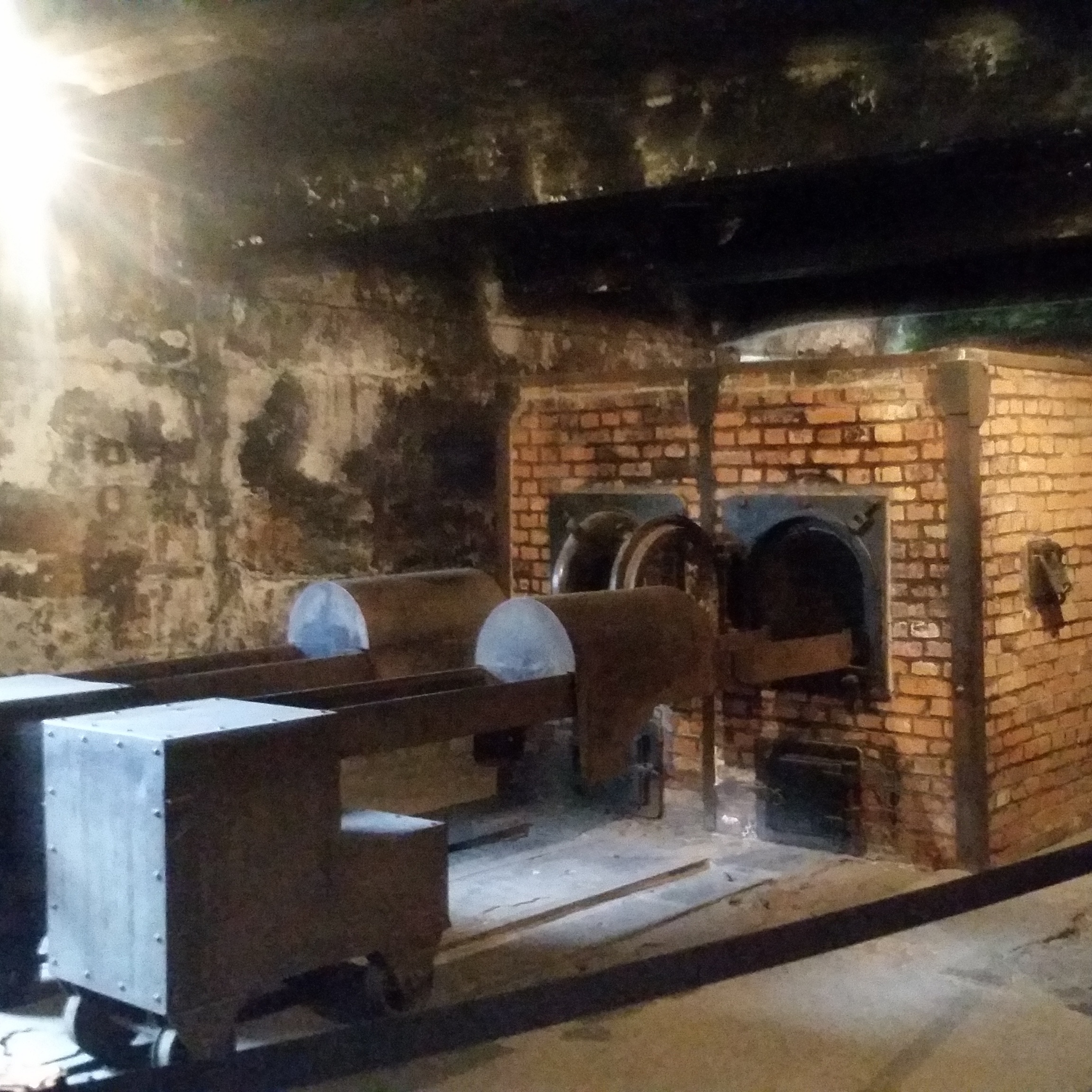
Our group solemnly walked out of Auschwitz to meet our driver, about 1 hour 40 minutes after our tour had started. We had a quick break before our drive to Birkenau so we grabbed a drink and went to the car.
Birkenau
The drive from Auschwitz to Birkenau takes only five minutes and we arrived just after 1pm. Leaving Konrad at the car park, we walked to the entrance to meet our same tour guide and group.

As we walked to the entrance, we were shocked by how massive the death camp is. There are blocks in all directions, as far as you can see.

Train tracks run right through the entrance and into the centre of Birkenau. When prisoners arrived they would not have been able to see that the rail track stopped at the end of the camp, where the gas chambers were located.
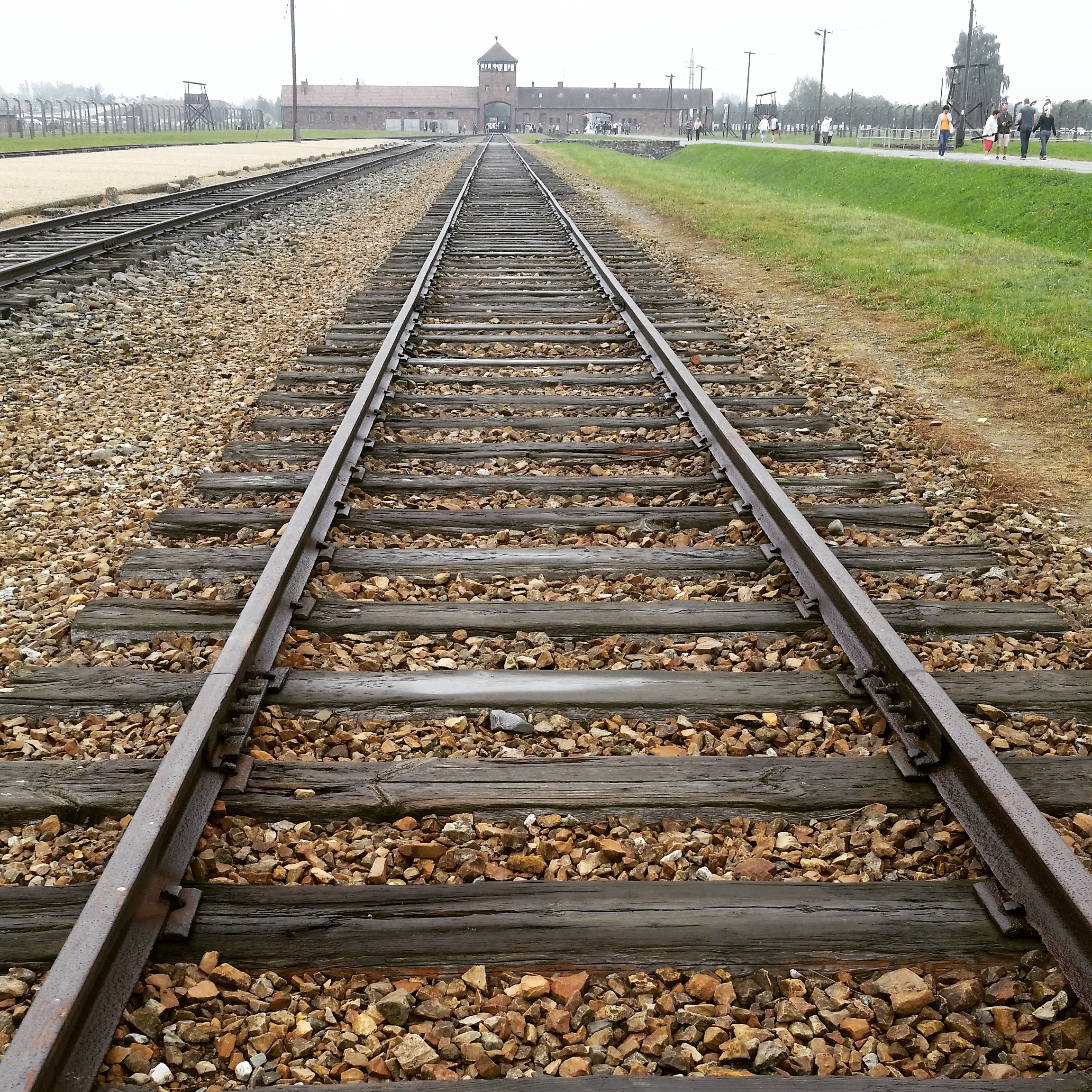
Auschwitz is set up with exhibitions to show what is was like at the time, and with information displayed on signs. Birkenau isn’t an exhibition, but has some areas available to view and a few things on display. We had seen photographs of train loads of people arriving on the platform at Birkenau to await selection at Auschwitz. Standing on that same platform, the size of it is incredible. There is a train carriage on the tracks to show the tiny space people were crammed into.
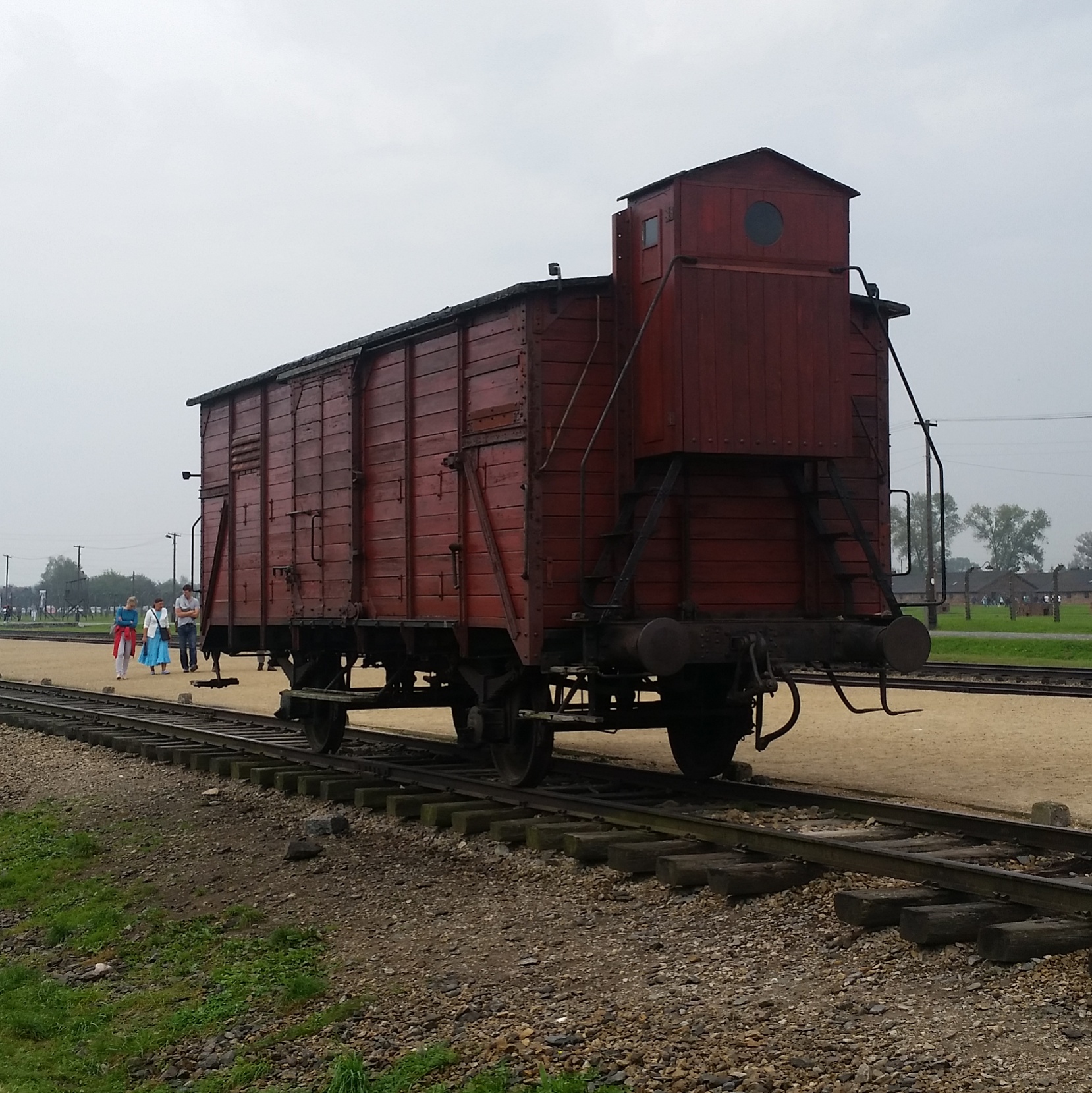
As we stood on the platform, our guide told us that during the summer, when people wear short sleeves she often sees survivors of the camps as they have a faded blue tattoo with their camp number on their arm. During one of her tours years ago, a survivor had been on her tour and told her about when he arrived in Birkenau as a very young man. He had been selected for work and separated from his other family members. He was moved into one of the blocks with other prisoners and kept asking the other men if they knew where his family had been taken. His questions were ignored by the other prisoners and by the third day he worked out that they had been murdered. I think that one of the hardest parts of being in one of these camps would be not knowing if your family and friends were ok.
We walked up to the back of Birkenau, where a large monument has been created. In various languages, there is a plaque that reads:
“For ever let this place be a cry of despair and a warning to humanity, where the nazis murdered about one and a half million men, women and children, mainly Jews from various countries in Europe.”

People had laid flowers and there were a few little origami cranes which reminded me of our visit to Hiroshima last year where they were given to us by a stranger as a symbol of peace.

Our guide told us that survivors didn’t want a monument but instead wanted Birkenau itself to be the monument. The camp is kept as a monument but a number of the buildings have been knocked down as there were just far too many to maintain.
The monument is at the end of the train tracks, where those not ‘selected’ would have been led from the train to the gas chambers. The gas chambers were right beside this. It is more of a ruins now and doesn’t have a roof but the size of it is much bigger than I expected. 2,000 people at a time would have been forced into this room and murdered. The efficiency of murder that the nazis had worked out was horrendous. Beside the gas chambers were the crematoriums but they were killing more people than they could deal with, which resulting in them burning the bodies at another part of the camp. Prisoners would have been forced to deal with the bodies.
There are headstones in a few different languages near the gas chambers which read:
“To the memory of the men, women and children who fell victims to the Nazi genocide. Here lie their ashes. May their souls rest in peace.”

Our tour group started to walk back towards the front of the camp and went inside one of the remaining buildings, Block 16a.

Inside the block were rows of shelves which were used as beds. These were over three levels and a lot bigger than the bunks in Auschwitz I, though I’m sure a lot more people were crammed into them.
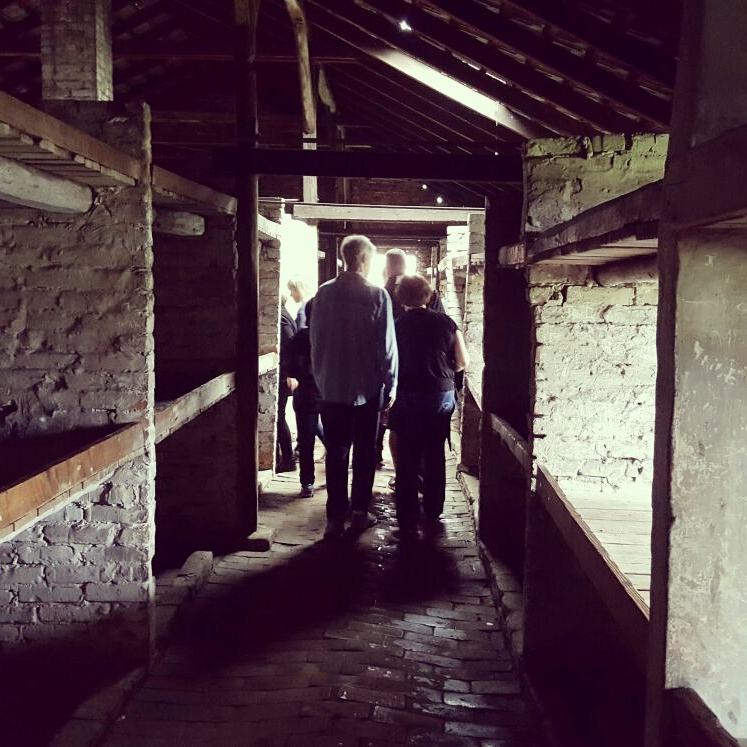
We walked with our guide towards the exit of Birkenau. She said a few final thoughts to leave us with, explaining that Auschwitz will be a symbol of many different things to different people but to everyone it will be a symbol of man’s inhumanity to the second man.
I left Auschwitz completely unable to comprehend how this had all been able to happen. How could over a million people have been murdered in this place and how could so many people join together to be so evil? The most frightening part is how recently it happened.
We walked back to the car park where Konrad was waiting for us in the car.
Lunch stop
Konrad drove towards the Wieliczka Salt Mine, which was about an hour’s drive in the direction of Krakòw. Before the tour, we had a short break for lunch at Restaurant Halit which is directly across the road from the Salt Mine.

I had dumplings with mushrooms and David had mushroom soup which was served in a bread bowl. We sat at a table with the others from our car and had a nice chat about where everyone was from and their trip to Poland. Once again we found ourselves speaking English with a variety of non-English speakers.
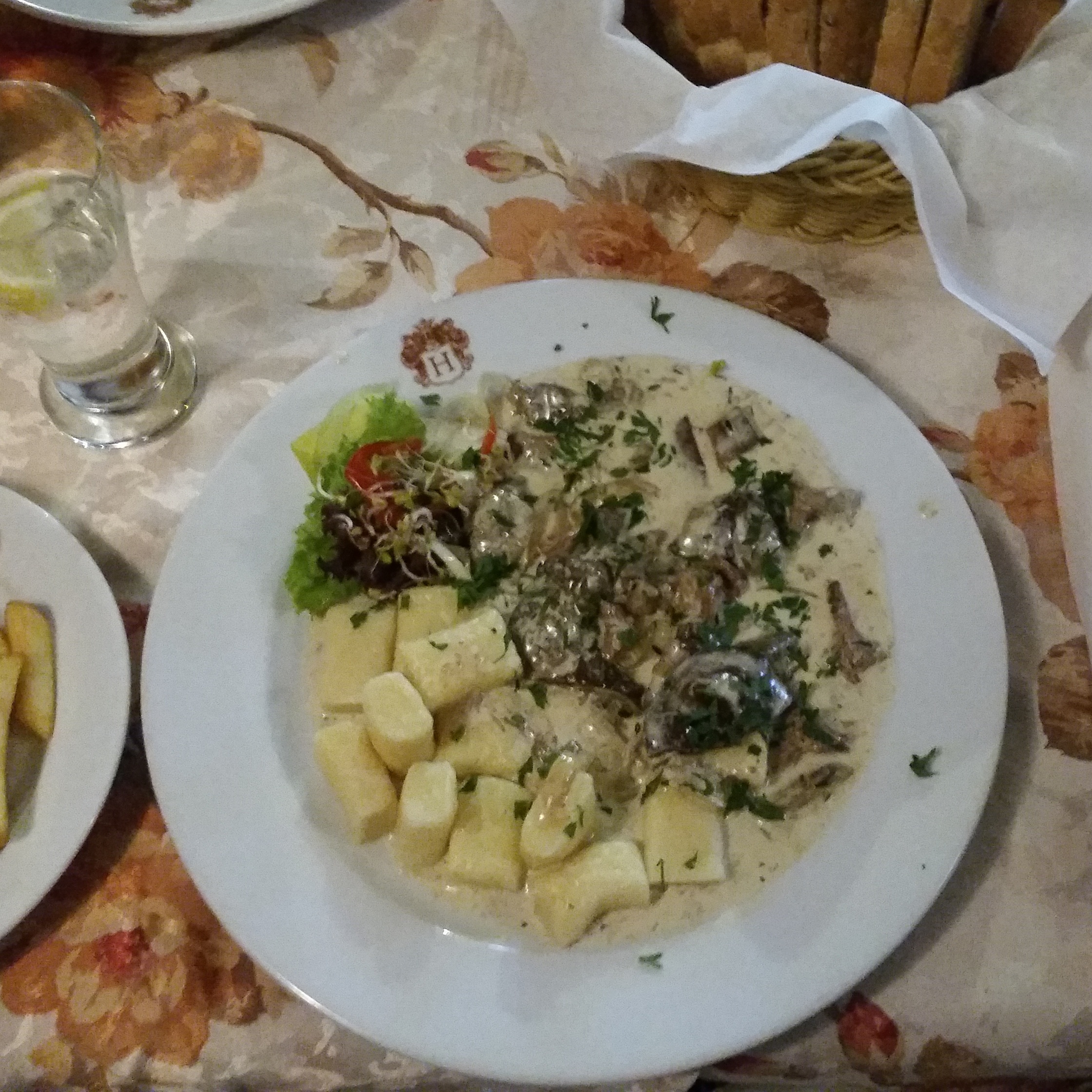
Wieliczka Salt Mine
Konrad came to find us when we finished lunch and walked across the road with us to the Salt Mines. At the entrance we met back up with the group of 35 people that we had been at Auschwitz with. We each got given headphones again and followed our guide into the building as Konrad waved us off.

Once in the building, we went down wooden steps…lots and lots and lots and lots of wooden steps. It was slow going with a tour group in front of us to wait for. I was at the back of our group and another tour group soon appeared on the steps behind me. Definitely not a trip advisable for someone who suffers from claustrophobia!

When we got to the bottom of the steps, we were walking along corridors which went deeper into the mine. Every so often, the corridor would open into a chamber which are set up with displays of what life would have been like in the mine when it was operational. All the sculptures are actually made out of salt which is pretty impressive.
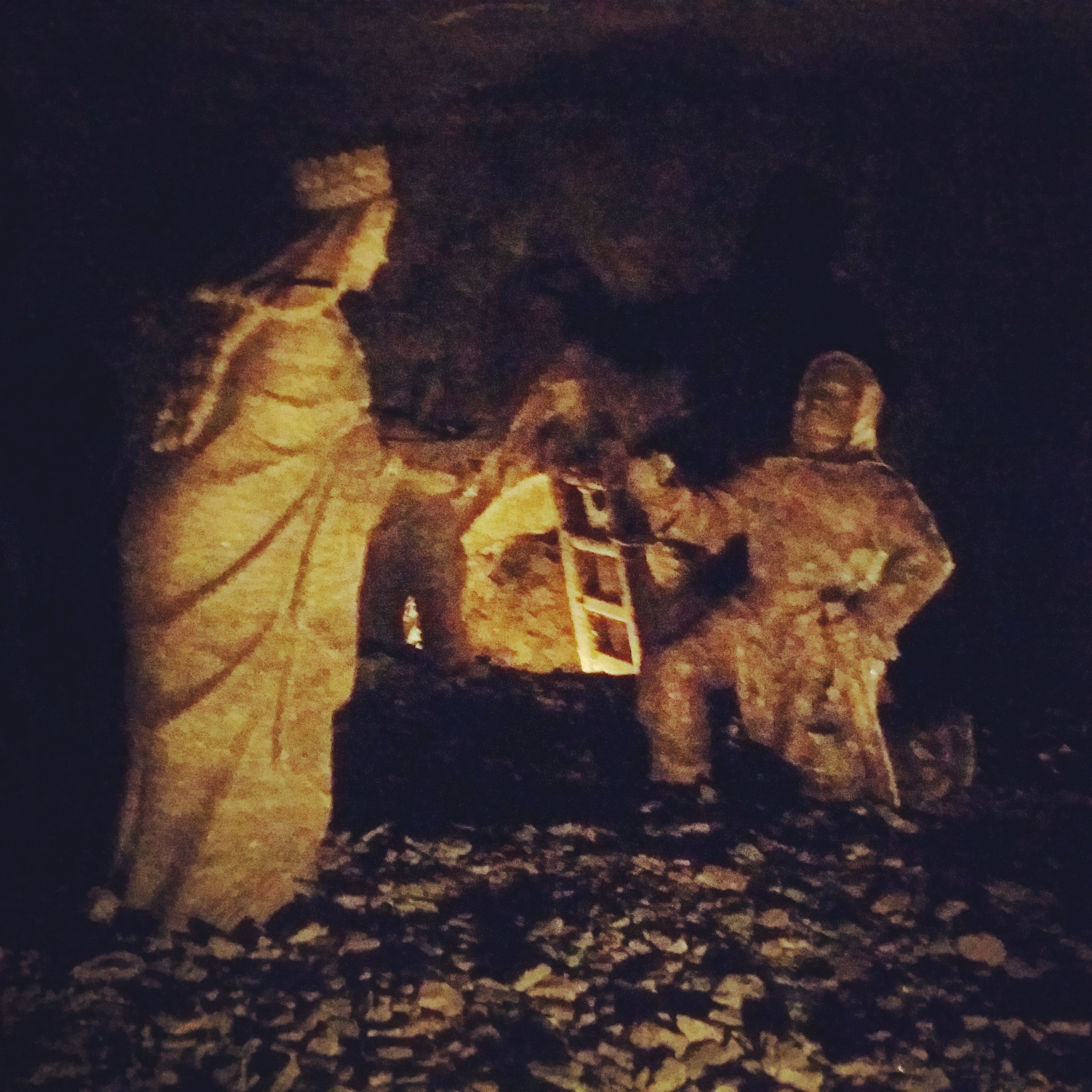
The whole tour takes around two hours and you walk through about 2km of the 300km of tunnels. The deepest part of the mine is 327m underground (slightly deeper than the height of Dubai’s Burj Al Arab hotel) though the tour only goes to a depth of 135m.
As we got deeper into the mine, the walls got saltier and saltier! Eventually the walls were completely covered in salt. Our guide encouraged us to touch the walls and lick our finger – definitely salt!
The most impressive part of the tour is the Chapel of St Kinga which is a huge chapel made entirely of salt. There is a big chandelier made of salt crystals and religious art work on the walls which has been carved out of salt. The room is available to hire for weddings and was actually being set up for a wedding when we were on our tour. It would definitely be a unique wedding venue!

We had a few minutes to wander around the Chapel and then continued on the tour. I expected this to be near the end of the tour but we had another 40-ish minutes to go. Near the Chapel of St Kinga was a big lake which obviously had a high salt content. Our guide told us that scuba divers had needed to have a lot of weight attached to them before they were able to dive in the lake. After the lake there was a cafe (which we just passed through), a bar and event space (closed and empty) and a shop with all things salt -salt lamps, cooking salt, salt crystals etc. We had a little while to wander about there before meeting the group and heading towards the lift.
A lot more walking and we ended up at the lift which took us in groups of about 10 back to the surface in a matter of seconds. It was dark and rainy by the time we emerged from the mine and our small group headed back to the car to meet Konrad who drove us the 30ish minutes back to our apartments/hotels in Kraków.
The Salt Mine was interesting and impressive and our guide was really knowledgeable and quite entertaining. However, I would suggest that it would have been better on a separate day to visiting Auschwitz. I’m only 30 and was knackered by the end of it so think those much younger or older would really struggle. There was a man in his 80s in our group for the salt mine and his daughter was asking if they could leave at the time we reached the Chapel of St Kinga but he had to wait for the group to get back to the lift. There is a lot of walking involved at both places and Auschwitz leaves you feeling quite drained. Saying that, it was nice to end the day with something more upbeat.
I think that there is a museum at the end of the tour which is included in the ticket price and takes a further hour to visit. I guess it was closed when we were there as we didn’t get the option to see it, but I think most people in our group were ready to leave after two hours anyway.
Pizza
We got back to our apartment and decided to order take away pizza and have a lazy night. With no recommendations left by our apartment owner, we asked the girl working on reception of the buildings. She gave us a few names of pizza places and we went up to our apartment to order from Pizzeria Dracula. I called to order but the guy who answered didn’t speak any English and hung up on me. I went back down to the reception and asked if the girl would call for me which she did and we got a ridiculously big pizza for 27PLN (only £5.50).
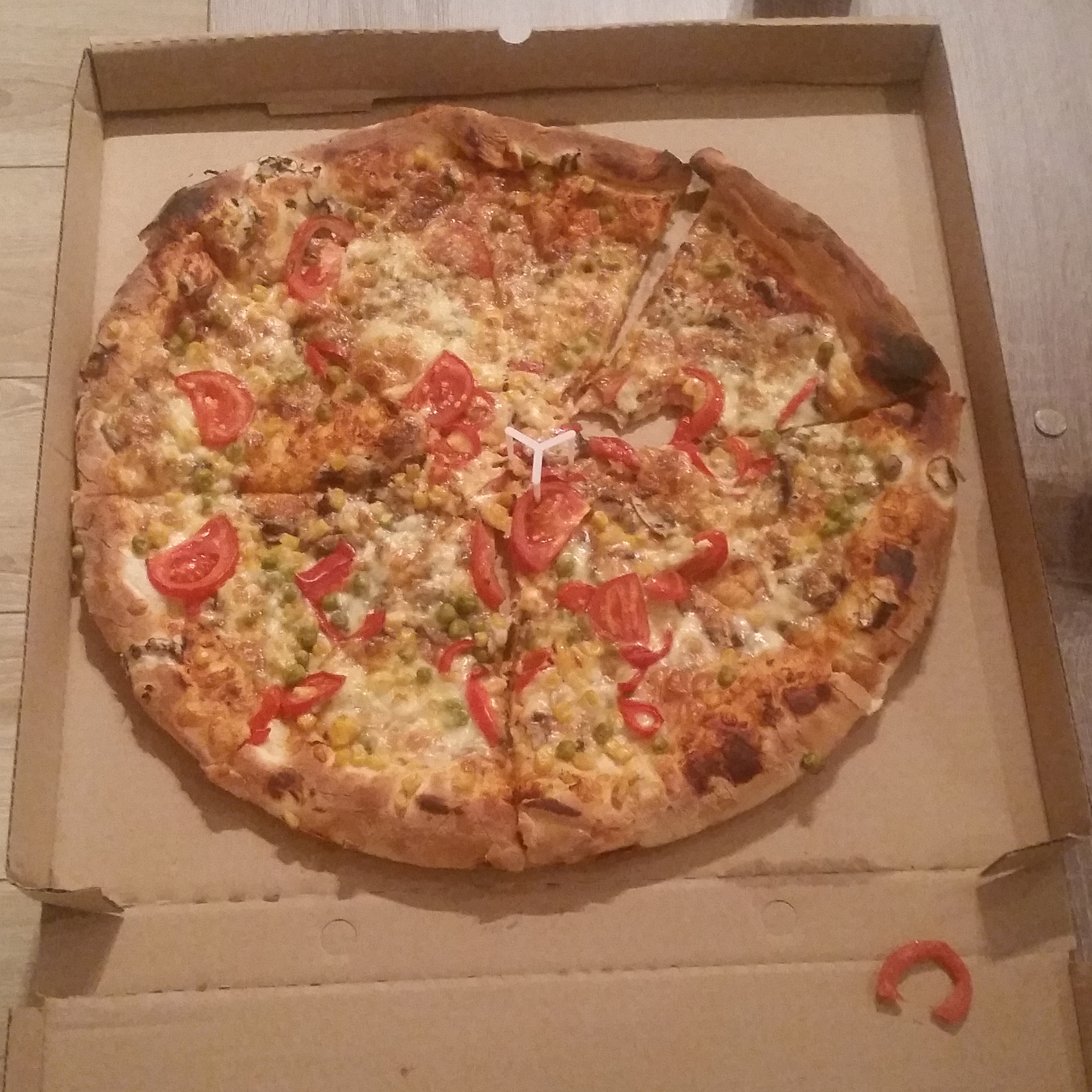
A nice quiet evening in our apartment, enjoying a giant pizza as our heads were spinning from what we had seen at Auschwitz and Birkenau. Horrifying but so worth a visit to appreciate the scale of the horror and pay your respects.

Thank you so much for sharing your experience. I have visited both these sites twice and on both occasions I found Auschwitz very moving and thought provoking.
Thanks for your comment Rob. It is certainly a moving and thought provoking place.
I visited Dachau Concentration Camp several years ago. It was in operation from 1933 and housed political prisoners from that early date. The ‘gas’ was never actually used there but many died nevertheless. It was a horrendously moving experience so I can’t even imagine how it must be to visit Auschwitz. With the current wars raging in the world, it sometimes feels as though no lessons have been learned.
Pingback: Trzy (Kraków) – boldtraveller
What a great read thank you for taking the time, we are going to do this trip in two weeks time
Hi Val. Thanks for your comment 🙂 Have a great trip to Poland. I’m sure you’ll find Auschwitz interesting/shocking.
Really interesting. I am planning a visit currently. Thanks for sharing.
I’m not sure if ‘enjoy’ is the right word but it’s a worthwhile experience. Have a good time in Kraków 🙂
Great read. Off to the Salt Mines today and Auschwitz tomorrow.
Thanks for sharing.
No amount of reading will prepare me for Auschwitz I’m sure.
Thanks for your comment, Katie. Enjoy the Salt Mines today. I’m sure you’ll be glad you have visited Ausvhwitz.
I was stationed in Germany in 1962 with my father at a place called Hohne 2 km from Bergen Belsen and remember how scary it was to me as a 10 yr old child , after reading your report so many memories came flooding back , Belsen was not as big as Auschwitz but no doubt contained the same aura of horror , I will find out in three days time , thank you for your report it will prepare me for seeing again such horror
Wow, that must have been terrifying for a 10 year old. How was your trip to Auschwitz?
Carole
Enjoyed reading your blog, the details you give are excellent and brought back memories of our visit a few years back. Karen, if I recall asked to cut a bit short our visit but I felt like you it is something you should do if you get the chance.
Anyway Karen’s cousin is doing Kraków trip later this month so I sent her the link to your blog. she is also doing the guided tour….we did the budget version and took the train ,it was a fairly short walk from the station, but a pleasant train journey from Kraków none the less and quite cheap If I remember.
Hi Robert,
Thanks for reading and sharing with Karen’s cousin!
Train sounds like a good option. We wanted to visit the Salt Mine on the same day so I’m not sure if it would have been possible.
Agree after going that it’s definitely someone you should do if you get the chance.